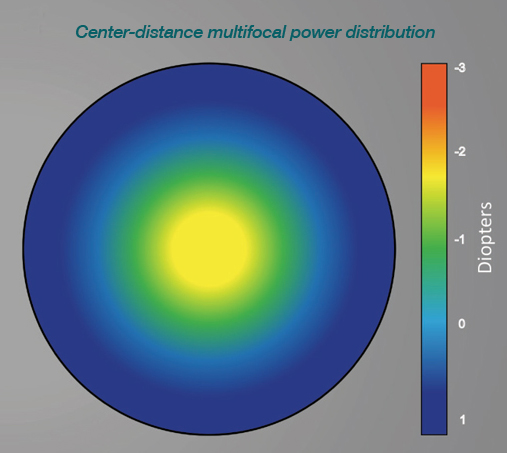 |
| The reason why multifocals are effective in controlling myopia may actually be that they reduce stimuli to accommodation. Photo: Keyur Savla. Click image to enlarge. |
In an effort to slow myopia progression, multifocal contact lenses are often used to decrease axial lengthening by focusing peripheral light in front of the retina among young myopic children. However, a researcher using optical imaging calculations recently found that these lenses may act more by reducing the stimulus to accommodation.
Gerald Westheimer, OD, PhD, of the University of California Berkeley’s division of neurobiology, wrote in his paper that it’s unclear how much actual change in the peripheral retinal image is taking place when patients have plus-power rings added to their regular refractive correction, as there is a dearth of information regarding retinal light spread in multifocal contact lenses. Retinal light spread is needed to understand how eye length-regulating mechanisms are triggered by light, he explained.
To estimate retinal image spread at different visual distances, he turned to “through-focus” diffraction computations in contact lens and eye models with normal parameters (e.g., polychromatic light, chromatic aberration, M-cone phototransduction layer). Based on the point- and edge-spread distributions of activation of phototransduction in the central retina, he concluded that adding multifocal zones creates “some veiling for in-focus viewing and substantial improvement of image quality for near targets in the unaccommodated eye.” These findings were reduced in the retinal periphery.
“Whatever therapeutic value there is in prescribing multifocal contact lenses for myopia control, it’s not particularly dependent on the precise configuration of the multifocal zones, nor can it be ascribed to changes in image quality specific to the retinal periphery,” Dr. Westheimer wrote. “Its origin is more likely less blur for near targets, reducing the stimulus to accommodation.”
Westheimer G. Multifocal contact lens myopia control: central and peripheral retinal image quality. Clin Exp Optom. May 9, 2022. [Epub ahead of print]. |

